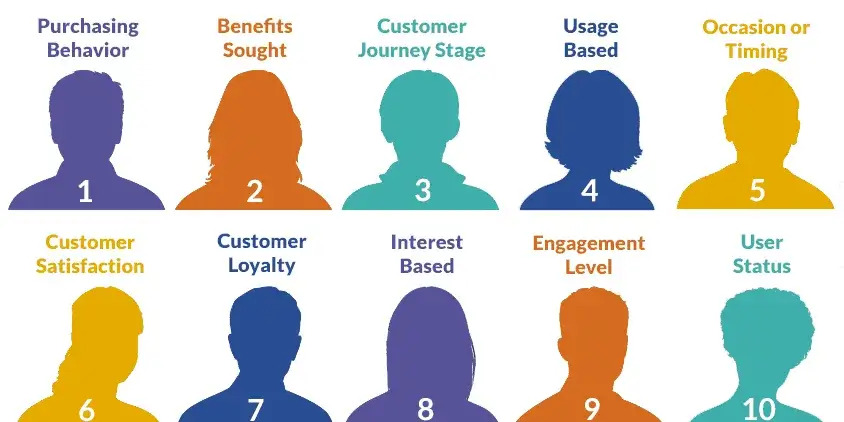Voicemail drops, a marketing tool that allows businesses to leave pre-recorded messages on customers’ voicemail inboxes without them ever picking up the phone, have evolved significantly over the years. What once started as a simple and impersonal mass outreach tool has now become an integral part of modern marketing strategies. The key shift in this evolution is moving from anonymity to authenticity, where businesses are now focusing on building personal, meaningful connections with their audience. This transformation has been driven by technological advancements, changing consumer expectations, and a deeper understanding of customer engagement.
The Early Days of Voicemail Drops: Mass Outreach and Impersonal Tactics
In the early days, voicemail drops were primarily used for mass outreach campaigns. Businesses would record a single message and distribute it to thousands of customers, often without considering personalization or relevance. This blanket approach was cost-effective, but it lacked the human touch that customers value in today’s marketing landscape.
At the time, voicemail drops were a simple way to deliver a message without having to engage in a live conversation, making them ideal for businesses with a large customer base. However, the impersonal nature of these messages often left customers feeling disconnected from the brand. The focus was on quantity rather than quality, and the messages were frequently viewed as unsolicited or intrusive. As consumers became more sophisticated and started demanding better experiences, businesses began to realize that these tactics were not fostering long-term relationships or brand loyalty.
The Shift Towards Personalization: Addressing Consumer Needs
As customer expectations evolved, businesses started to see the importance of tailoring their marketing efforts to meet individual needs. This shift in focus from mass outreach to personalized messaging marked a significant turning point for voicemail drops. Companies began integrating data analytics to segment their audience and deliver messages that were more relevant and engaging.
Personalized voicemail drops take into account the customer’s preferences, previous interactions with the business, and even their location. For example, a personalized voicemail could wish a customer a happy birthday, offer discounts based on their past purchases, or provide helpful tips based on their current needs. This level of personalization has led to better customer engagement, as recipients are more likely to listen to messages that feel relevant to them.
Furthermore, by incorporating the customer’s name or details about their previous interactions with the brand, businesses can make the voicemail feel less like a generic sales pitch and more like a thoughtful outreach. As a result, customers are more likely to trust the brand, leading to higher engagement rates and stronger relationships.
The Role of Technology: AI and Automation in Modern Voicemail Drops
The rise of artificial intelligence (AI) and automation has played a crucial role in the evolution of voicemail drops. Today, businesses can use AI-driven systems to automate the process of sending personalized voicemail messages at scale. This has made it easier for businesses to maintain the personal touch while still reaching a large audience.
Automation tools can be programmed to send messages based on specific triggers, such as customer behavior, product updates, or seasonal promotions. For example, a customer who has recently abandoned their shopping cart might receive a voicemail drop reminding them to complete their purchase, offering a discount or free shipping as an incentive. These automated messages can be crafted with a personal tone, making the customer feel valued and understood.
AI can also enhance voicemail drops by analyzing customer preferences and interactions to predict the best times to send messages. This helps ensure that the voicemail is delivered when the customer is most likely to engage with it, further enhancing the effectiveness of the campaign.

Authenticity and Transparency: Building Trust Through Voicemail Drops
As consumers become increasingly wary of over-marketing and deceptive tactics, authenticity has become a key factor in modern marketing. To stand out in an era of skepticism, businesses must be transparent in their communications and show genuine care for their customers. This shift towards authenticity is also evident in the way voicemail drops are now being used.
Rather than using voicemail drops as an impersonal marketing tool, businesses are incorporating elements of empathy, honesty, and transparency into their messages. For example, a company may use a voicemail to apologize for a delay in service or to inform customers about changes to a product. When companies embrace authenticity, customers are more likely to perceive them as trustworthy and dependable.
Voicemail drops can also be used to humanize a brand by including messages from actual team members rather than a generic voice or automated system. Hearing a friendly, human voice fosters a stronger emotional connection with the brand, which can significantly increase customer retention.
The Future of Voicemail Drops: Hyper-Personalization and Multi-Channel Integration
Looking ahead, voicemail drops will continue to evolve as businesses strive to deliver more meaningful, personalized experiences. The future of voicemail drops lies in hyper-personalization, where messages are tailored not only to individual customer preferences but also to their specific needs at any given moment.
For instance, advanced data analytics will enable businesses to track and respond to customer behavior in real-time, sending voicemails that are perfectly aligned with the customer’s current context. A customer browsing a product page might receive a voicemail drop offering more information or a special offer for that particular item. Similarly, businesses could integrate voicemail drops with other channels, such as email, SMS, or social media, to create a seamless, multi-channel experience.
Incorporating voice recognition and natural language processing will also play a significant role in the future of voicemail drops. Customers may soon be able to engage in two-way conversations with voicemail systems, allowing for even more personalized and interactive experiences.
Integrating Voicemail Drops with Customer Journey Mapping
The customer journey is no longer linear, and today’s businesses need to understand how to engage their customers at various touchpoints. Voicemail drops can play a crucial role in enhancing the customer journey by providing timely and relevant information based on where the customer is in their buying process. By integrating voicemail drops with customer journey mapping, businesses can ensure that their messages resonate at every stage of the customer lifecycle.
For instance, if a customer is in the awareness phase, they might receive an informative voicemail about a product or service, sparking interest. Later, if the customer reaches the consideration phase, a voicemail can offer testimonials, case studies, or promotional offers that push them closer to a decision. This seamless flow of communication reinforces the brand’s presence and increases the likelihood of conversions.

The Impact of Voice Quality and Tone on Customer Perception
The quality of the voicemail drop itself has a direct impact on how the customer perceives the brand. A clear, professional, and well-paced voice message reflects positively on the business, enhancing trust. Conversely, a robotic or rushed message can leave a poor impression.
Studies show that voice tone, inflection, and pacing can significantly affect the emotional response of the listener. An empathetic tone can convey care and understanding, while a lively tone can instill enthusiasm and energy. Businesses should pay attention to how their messages are delivered and even consider using voice actors or professional narrators to maintain the highest quality in their voicemail drops. This level of attention to detail demonstrates the brand’s commitment to providing a superior customer experience.
Voicemail Drops as Part of a Broader Retargeting Strategy
Voicemail drops are also highly effective as part of a broader retargeting strategy. After a customer interacts with a business online but doesn’t convert—whether it’s browsing products, signing up for a newsletter, or abandoning a cart—voicemail drops can be used as a follow-up tool.
For example, if a potential customer abandons their shopping cart, a voicemail drop can remind them of the products they left behind, offer them a discount, or highlight the benefits of completing their purchase. This subtle, yet effective, follow-up can significantly improve conversion rates and keep customers engaged with the brand even after they’ve left the website.
Moreover, voicemail drops in this context serve as a non-intrusive way to keep the brand top-of-mind without bombarding the customer with too many emails or ads. Since voicemails are perceived as more personal than emails, customers are more likely to listen to and respond to these messages.
Using Voicemail Drops for Customer Feedback and Surveys
Another powerful use for voicemail drops is to gather customer feedback. Businesses can use voicemail drops to ask for customer reviews, conduct surveys, or simply check in with customers about their experiences. Voicemails can be framed as an opportunity for customers to provide valuable input, which shows that the business cares about their opinions and is actively working to improve.
Because voicemails are delivered directly to the customer’s voicemail inbox, they can create a sense of urgency and importance that other channels, like email, might lack. An effective voicemail could prompt a customer to take a few minutes to fill out a survey or give feedback about their latest purchase. In this way, voicemail drops can help businesses improve their services, products, and customer satisfaction overall.
A/B Testing and Optimizing Voicemail Drops for Better Results
A/B testing is a vital part of any marketing strategy, and voicemail drops are no exception. By testing different variations of voicemail messages—whether it’s the wording, tone, timing, or call-to-action—businesses can identify the most effective approaches.
For instance, businesses might test how different offers or incentives resonate with customers, or how the length of the message affects customer engagement. By analyzing the performance of various voicemail drops and adjusting their approach accordingly, businesses can maximize the impact of their campaigns and optimize the effectiveness of their outreach.
The ability to fine-tune voicemail drops ensures that businesses are continuously improving their strategies and achieving higher conversion rates with each campaign.

Voicemail Drops in Omni-Channel Campaigns
In today’s competitive market, a multi-channel approach is essential for a successful marketing strategy. Voicemail drops, when integrated with other communication channels like email, SMS, and social media, can amplify a brand’s reach and effectiveness. For example, businesses can use voicemail drops as a follow-up to an email campaign, reiterating the key points of the message and adding a personal touch.
By creating a consistent message across various platforms, businesses can ensure that their customers are receiving relevant content in the most convenient format. This omni-channel approach not only increases engagement but also enhances the customer experience by providing multiple avenues for communication and interaction.
Legal Considerations and Ethical Use of Voicemail Drops
While voicemail drops can be highly effective, businesses must ensure that their usage complies with laws and regulations regarding telemarketing and consumer protection. In many jurisdictions, businesses need to have consent before sending automated voicemail messages, and failure to comply with these regulations can result in hefty fines.
It’s essential for businesses to keep updated on the legal requirements surrounding voicemail drops, including guidelines from the Telephone Consumer Protection Act (TCPA) in the United States or GDPR in Europe. Additionally, businesses should ensure that their voicemail drops are ethical and not overly intrusive. Sending too many voicemails or leaving unsolicited messages can lead to negative customer sentiment and, in some cases, brand reputation damage.

Why Voicemail Drops Are Here to Stay
Despite the rapid evolution of digital marketing tools, voicemail drops remain a powerful strategy for customer engagement. As the marketing landscape continues to change, voicemail drops will remain relevant by evolving to meet the needs of consumers who seek more personalized, authentic, and transparent interactions with businesses. The key to success in voicemail marketing will be striking the right balance between automation and personalization, ensuring that messages are timely, relevant, and humanized.
In a world where authenticity is increasingly valued, businesses that can leverage voicemail drops to create meaningful connections with their audience will stand out from the competition and enjoy long-lasting customer relationships. By embracing the evolution of voicemail drops, businesses can move from anonymity to authenticity, driving customer loyalty and success in modern marketing.

